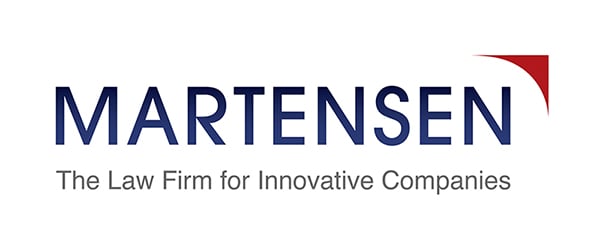The “Property” In Intellectual Property
Patents, trademarks, and copyrights are commonly known as “intellectual property” or IP. As occasional high-profile lawsuits between large corporations illustrate, IP can be extremely valuable, causing companies to budget significant amounts of money to acquire, defend, and assert IP rights. The concept of IP can be controversial, prompting various constituencies to condemn the entire idea (e.g., as dampening innovation or hampering individuals and smaller entities), or to object to the vast sums spent on high-profile lawsuits and their resulting awards/settlement.
Regardless of the position of a creator, innovator, or employer of a creator or inventor, it is beneficial to acknowledge that IP is here to stay. Various changes to rules and regulations have been proposed, adopted, and rejected over the years in reaction to evolving economic and political environments. Significant international treaties and policies are in place and constantly monitored to assist the United States and almost every other country in the world in reaching an agreement on how IP will be treated across borders. This article focuses on U.S. patent rights and basic facts every innovator and innovative company should know. Some of the topics apply to trademarks and copyrights, but each of these three major forms of IP has its own set of laws, rules, and regulations.
The Origin of Patent Rights
Patents are a constitutional grant. Article I, Section 8, Clause 8 states: “[The Congress shall have power] to promote the progress of science and useful arts, by securing for limited times to authors and inventors the exclusive right to their respective writings and discoveries.” U.S. Code Title 35 (35 U.S.C.) is a group of federal patent laws that interpret the constitutional grant. U.S. Code of Federal Regulations Title 37 (37 C.F.R.) is a detailed set of rules that govern how U.S.C. 35 will be interpreted and applied by the U.S. Patent and Trademark Office (USPTO). The USPTO is under the Department of Commerce.
Ownership of Patent Rights: Ownership vs. Inventorship
Ownership of rights is established and transferred on an individual patent basis. It is extremely important for individual inventors and companies to understand how title to patents can be held and transferred because the state of the title indicates the state of ownership of all the IP rights in an invention, just as a title to a real property indicates the state of ownership of real estate. For that reason, stakeholders should:
- Establish ownership as soon as possible.
- Have agreements in place as an employer or co-inventor, and as a signor, know what you are signing up for.
Employee agreements and contractor agreements should always include an IP provision that makes clear to all the parties who will own any IP conceived by any of the parties. Anyone who has worked for a technology company has almost certainly signed such an agreement. Those individuals who have signed this type of agreement must also be aware of any provisions that affect their possible later work for other companies or for themselves.
Non-compete provisions are typically governed by state laws and can limit the amount of time a company can prevent a former employee from working in a very similar field. It is not uncommon for individuals who are experts in a particular field to start their own company and then be challenged by a former employer with allegations that they “stole” ideas from the company, worked on the new ideas on company time, etc.
Conversely, employees should be aware of previous knowledge and experience they are bringing to a new company, and protect any such knowledge and experience from inadvertently being classed as property of the new employer. Employers should have robust employee agreements in place that thoroughly and fairly address all potential scenarios.
Groups of individuals working together on an invention are best served by creating an entity at an early stage. There are many reasons for this, and having an entity to hold any IP is only one. Groups of individuals who become co-inventors may have agreements among themselves regarding rights to any IP. Typically, however, most companies simply have an agreement whereby all inventors assign any right in IP created “under” the company to the company.
Employee Agreements and Contractor Agreements: What to Know Before You Draft or Sign
It is important to understand the mechanics of patent inventorship/ownership, specifically for inventions that are first filed in the U.S. This includes the concept of inventorship.
The first owners of any invention that is the basis for a patent filing are the inventor(s). The inventors “conceived” the invention. An inventor is defined as anyone who contributed to the invention as defined in the eventually allowed claims. This definition has proven to be a bit slippery at times. For example, one person may have the high-level concept for the invention, and another person may solve unique problems to make the high-level concept work. Both of these people are inventors. In another, rather too common scenario, groups of people in an organization are named as inventors as an acknowledgement of their mere membership in the group, or as some kind of reward while they are not really inventors at all (patents with more than five or six inventors are common in some companies). Also, some companies may choose to name one of the chief officers as an inventor on multiple patents even though the inventive contribution is not easy to pin down.
The downside of naming individuals who are questionable inventors as inventors seems pretty remote, but it is quite real. Technically, having incorrect inventorship on a patent makes the patent invalid and unenforceable. However, this determination is on a claim-by-claim basis and is, understandably, hard to make. It is important to appreciate the significance of inventorship and work with a patent attorney to get it right from the start. Companies that establish and publish clear policies regarding all aspects of IP protection, including inventorship, will be acquiring an inexpensive insurance policy protecting against stumbling into untold potential future legal landmines.
An Employer’s Perspective of Patent Rights: Further Details You Need to Know
As an employer, you should understand certain key concepts, including the idea of ownership. As stated above, the first owners of the invention are the inventors. However, unless the invention is truly an invention by a solo inventor who does not wish to monetize the IP, it is the usual practice to assign the rights to the invention to an entity upon filing. The assignee of the invention becomes the owner of the invention. In the U.S. today, the assignee can also be the applicant for patent. The applicant is the entity that has authority to deal with the USPTO (usually through a patent attorney) during the prosecution of the application. In the past, this was not automatically true, but the U.S. has changed this (along with some other rules/procedures) to harmonize with the practices in most of the rest of the world.
From the perspective of the company (who we are assuming to be the assignee of the invention and the grantor of a power of attorney to the patent attorney representative), it is desirable to be named the assignee/applicant immediately. This makes it clean and clear that the company has been assigned all rights in the invention by the inventor(s), meaning: 1) the company is in charge of the prosecution of the application before the UPSTO, and 2) the company can dispose of any IP rights in the invention in any way without any communication with, or approval from, the inventors, including choosing to not pursue those rights such that they will lapse.
The registering of ownership is critical. Ownership is evidenced by the execution of an assignment from the inventor(s) to the company. Assignments should be executed as soon as possible in the course of filing a patent application. Once an assignment is executed, it is the contract that evidences the transfer. However, the assignment should be registered with the USPTO as a matter of course. Technically speaking, if the assignment is not registered, the assignment is not ineffective. But the registration of the assignment puts others on notice of the current ownership of the IP rights. “Others” includes potential purchasers of IP and lenders (for whom the IP serves as collateral).
As an inventor or inventive entity (company), be aware of the nature of unique relationships. For the purposes of this article, unique relationships mean those in which the inventive entity is collaborating with and/or funded by another entity that has relatively more power in the relationship. This could be an inventive entity that is currently contracting with the U.S. government or negotiating to do so. This could also be a university doctoral candidate who has some obligations to the university IP office, yet has started, or is starting, a separate company.
Inventors contracting with the U.S. government face significant potential unseen issues that are best dealt with very early in the stage of invention development. For one thing, the U.S government requires significant paperwork from beginning to end in order to successfully comply with a contract. And more importantly IP rights can be retained by the inventive entity provided the appropriate steps are taken up front. It is worthwhile consulting a firm such as Martensen IP Law that is truly practiced in this area.

-1.png?width=352&name=ezgif_com-gif-maker_99)-1.png)

